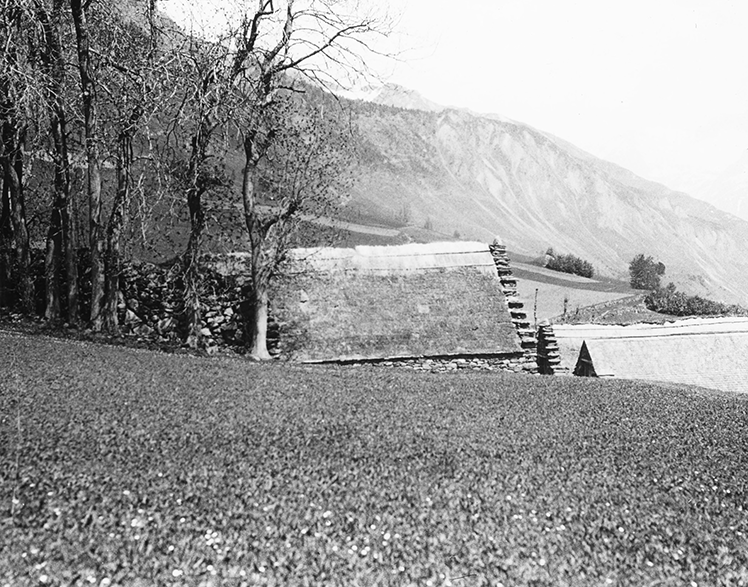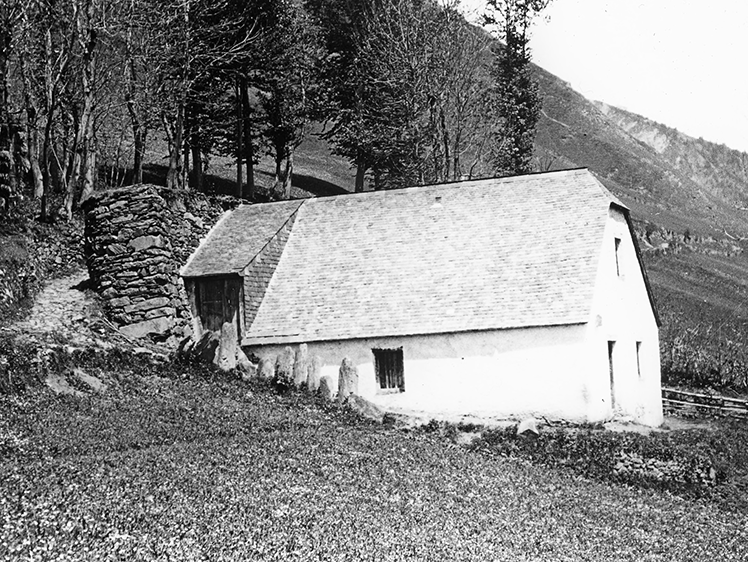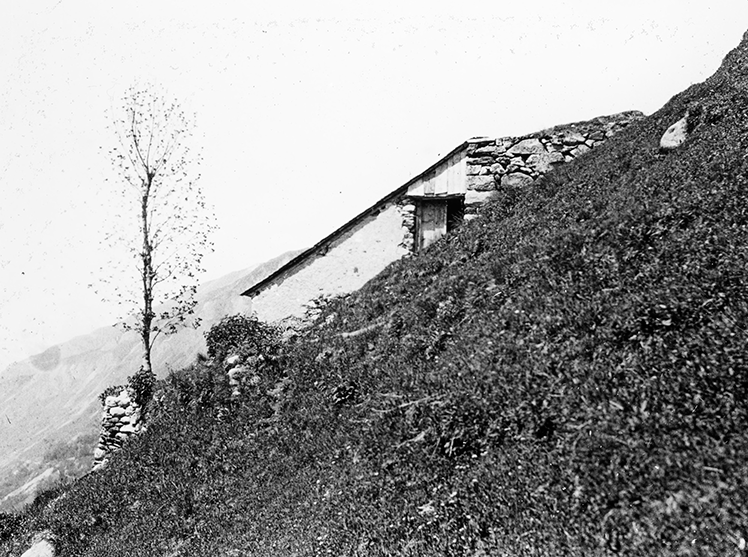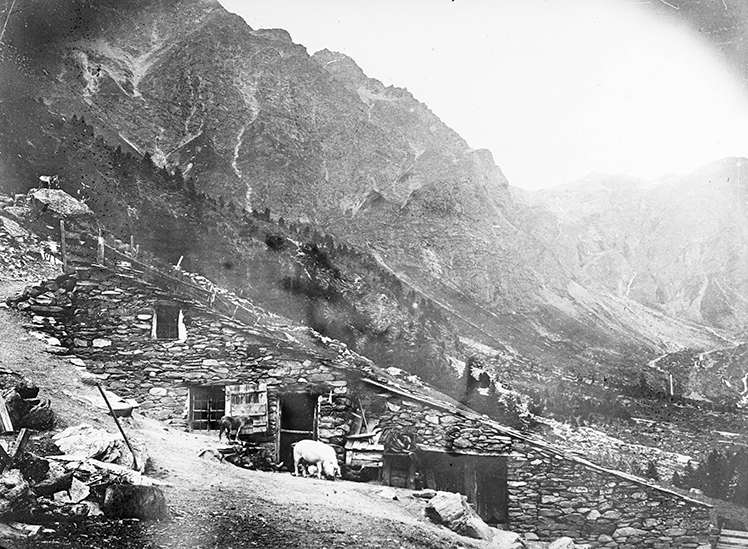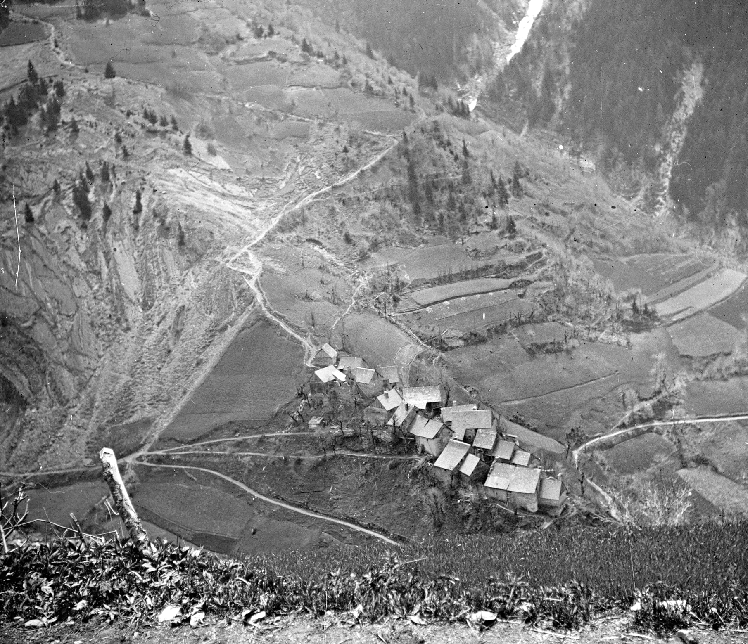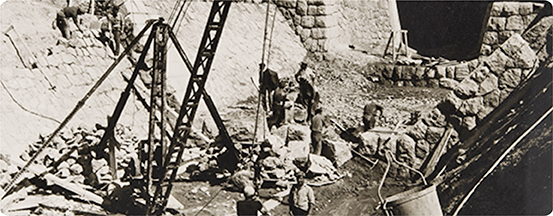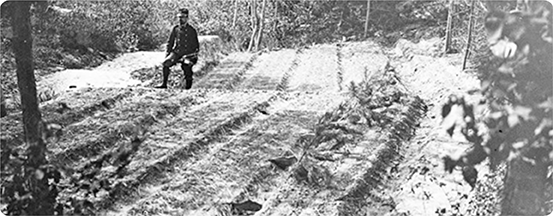Of avalanches and people: tips for adapting your living environment
In the high mountains, the snow can last for months and the risk of avalanches is permanent. Despite this, mountain dwellers have always adapted to this environment. Grouped together in communities and leading a self-sufficient life, they have used their ingenuity to take advantage of the constraints and subtleties of the terrain by relying on existing natural protections.

These photos from the late 19th and early 20th centuries illustrate passive defence techniques used to avoid or limit the damage caused by avalanches in hamlets and villages.
Several strategies were put in place:
- Take shelter behind a natural rocky spur, a "tourne" or "turne" in Vallorcine dialect, and use it to build a sort of protecting wedge uphill from the building to deflect the avalanche.
Protecting wedges can be more imposing, like the one built by the locals to protect the church in Vallorcine.
- Another solution is to build flush with the ground, blending into the slope, adopting the gradient and adapting to it.
- Building high up to escape danger.
The protecting wedge can be used for other purposes, such as drying sheep dung “cakes” in the sun, which can then be used as fuel in winter.
And today at INRAE ?
Half a century of sustained research has produced an advanced framework and tools for the study of avalanche risk, firmly underpinned by the principles of multi-disciplinarity and inclusiveness. These will prove vital as the changing climate presents us with new challenges.
Read the online dossier Climate change and risk: A whole-system approach to a fast-changing risk (published on 30 January 2023).
Bibliographic sources
Givry, M., Perfettini, P. (2004). Construire en montagne, la prise en compte du risque d’avalanche, (Building in the mountains, taking avalanche risk into account. In French). 81 p.: A guide published by the Ministries for the Environment and Infrastructure, respectively, to help both private individuals and building professionals pay particular attention to design and construction in mountain areas subject to avalanches.
Text written by Catherine Tailleux (INRAE-DipSO).
Thanks to Florie Giacona and Nicolas Eckert (Univ. Grenoble Alpes, INRAE, IGE) for their proofreading.
How to cite : Focus Agate: Of avalanches and people: tips for adapting your living environment, Catherine Tailleux (INRAE-DipSO), march 2024. https://agate.inrae.fr/agate/en/content/focus


